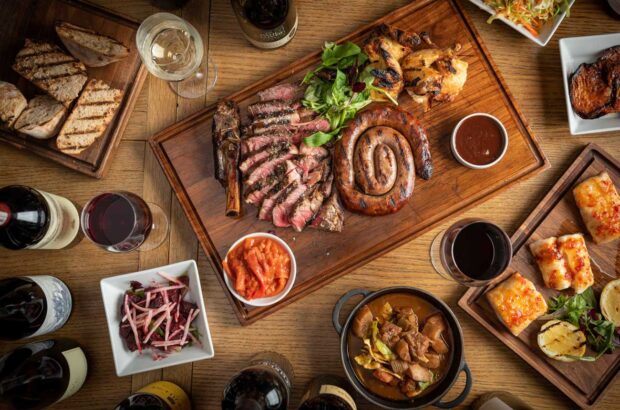Almost the first thing the Nazis did when they marched into Warsaw in 1939 was to steal the Tokaji wines from the famous Fukier cellars. It was no secret that unique bottles of the greatest vintages were stored there – going back to the celebrated 1606. Their looting was no random smash and grab; they were stolen on orders from the very top. What happened to them subsequently is the mystery – still being played out; with the last confirmed sighting in 1958, when the Soviet Marshal Zhukov gave an American general some of the 1668. Bottles of incredibly ancient Tokaji wines still turn up from time to time; not perhaps so remarkable as the fact that they are still extraordinarily delicious.
https://www.decanter.com/wine-travel/europe/tokaj-travel-guide-3787/
In June, Linden Wilkie opened two mid-18th century bottles of Tokaji wines from the cellars of the King of Saxony (the last being Friedrich August III, abdicated 1918). Wilkie runs The Fine Wine Experience: rare wine tastings for collectors. Fifteen Tokajis, two from the 18th century and three from the 19th, was good going, though, even by his standards. The 19th-century wines were essencias: the ultimate expression of botrytis; almost treacle-like, exuded drop by drop from the pile of shrivelled grapes and too sweet ever to ferment into normal wine.
The 1888 was the one for me: black as molasses and not much more liquid; swirling the glass, nothing remained in the bottom. It clung, brown glinting with green lights, to the sides. The point of Tokaji is that it makes ridiculous amounts of sugar drinkable. That was surely the reason crowned heads adopted it in the days when anything sweet was a luxury. Its secret? Balancing acidity that rises to equally ridiculous heights and gives an impression of zippy freshness. The 1888 smelt like an infusion of tea leaves, herbs, quince and apricot. Japanese brown tea, in fact: tannic, minty, mind-clearing. Umami is the taste of appetite: this had that savoury quality.
https://www.decanter.com/learn/advice/tokaji-sweetness-measured-aszu-430218/
Together, acidity and umami make the tang that defines Tokaji. No other wine has it. Apricots, pears, quince, raisins, figs, orange… everyone finds dried fruit flavours in it. Sometimes I find barley-sugar, sometimes butterscotch. With age comes madeira, sometimes mocha, sometimes tobacco. The second of our 18th-century bottles that evening danced among these suggestions in an ethereal mint-green veil.
And the modern wines? People talk about old- and new-style Tokaji. There are certainly producers who adapt tradition to make full-fruit, rather than dried-fruit, wines that are more like Sauternes, at least in youth. The last wine was mine, the first from my jointly owned vineyard Mézes Mály, the 1993. Editor: may I just say I was not ashamed of it?







